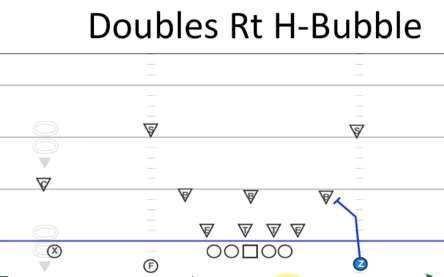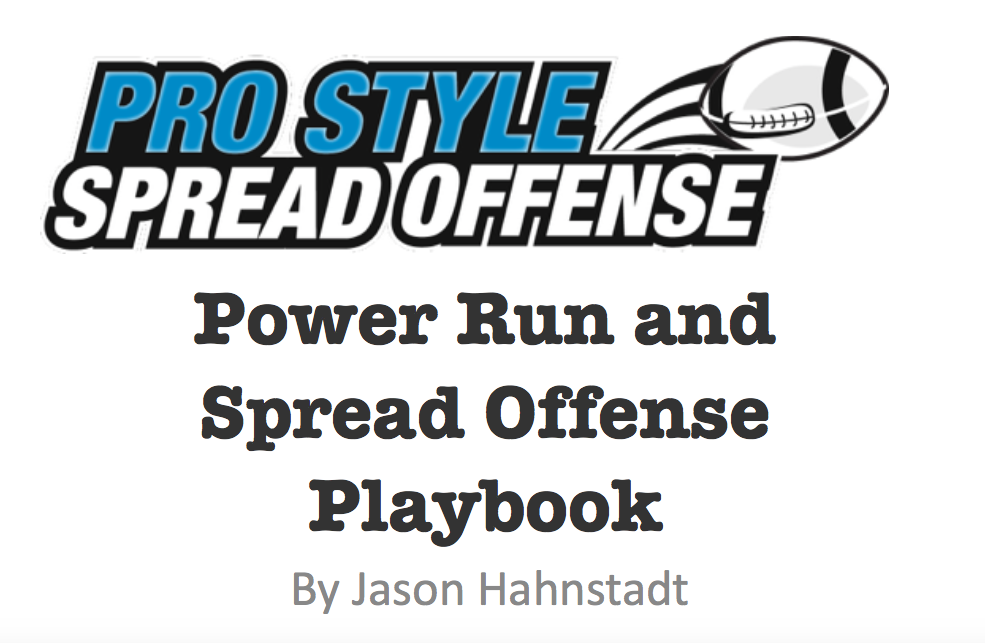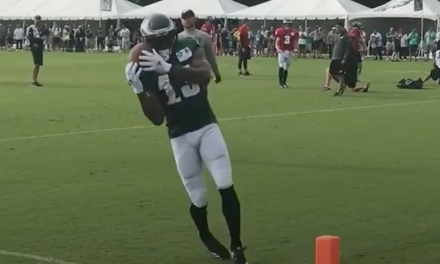The essence of a dig route is one that gets a receiver across the middle of the field under the safeties but behind the linebackers (Figure 1).
But is there more to it than just what is shown? Absolutely.
In this article, we will show you these details and how you can coach your receivers to run it the right way.
Don’t forget to check out our Passing Route Tree for other route strategies.
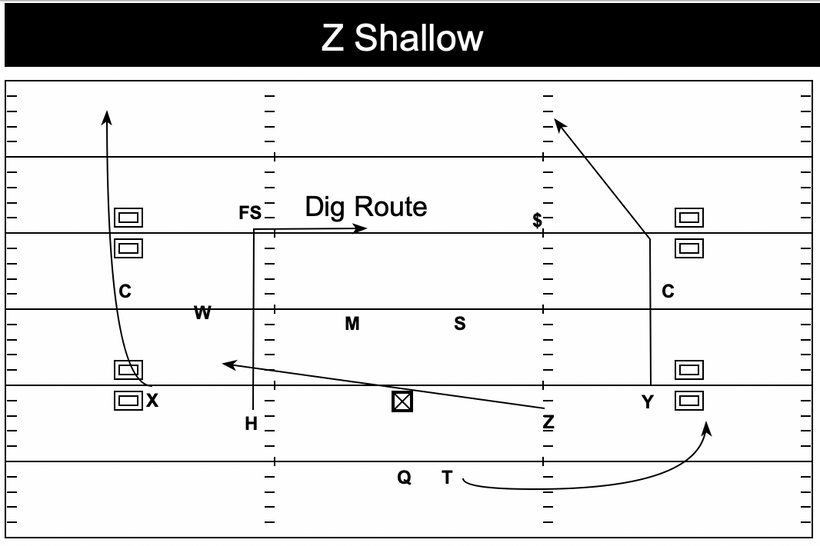
What is a dig route?
The Dig route is designed to make a defender think that the receiver is going to run a Go route straight downfield.
At the last minute, the receiver will stop and cut straight across the middle of the field so that they are now parallel to the line of scrimmage.
The route is called the Dig because it requires the receiver to dig his feet into the ground so that he’s able to stop and shift his weight properly for the second part of the route.
The Dig is designed to be a shorter route.
It’s most often run within 8-12 yards of the line of scrimmage – but at least deeper than the linebackers who are dropping in their under zones.
As such, it’s a route that is run a lot cipf-es.org of times by tight ends and inside wide receivers who line up in the slot.
The middle of the field is where a lot of defenders line up so this can also affect the route.
In the path of the receiver running the Dig route will often be all three linebackers, at least one safety, and possibly even a cornerback.
That’s why offensive coaches will utilize routes for the other outside receivers to clear defenders out of the middle of the field.
A lot of times, the outside wide receivers will run routes deeper down the field to clear out cornerbacks and draw the attention of safeties.
Another great combination is to run a receiver across the field in a 2-3 yard shallow route. This tempts the linebackers to come up and then gives more room for the dig to go behind.
Running backs may even run routes to the flat or a wheel route to draw a linebacker out of the middle of the field.
How to run the dig route
At the snap, the receiver will sprint straight downfield at full speed avoiding all contact with any nearby defenders.
When a receiver gets about 2-3 yards away from their predetermined distance, they break down as hard as possible.
They then use their outside foot to push off, and turn at a 90-degree angle so that they are now facing the middle of the field.
At this point, they should be facing the opposite sideline.
For this part of the route, the receiver should run straight toward the opposite sideline while also looking for an open window that the quarterback can deliver the ball.
They may have to adjust by speeding up or slowing down a bit in the open window.
The goal is to feel the defenders and hopefully understand what the quarterback is thinking so they can both be on the same page.
How to practice running a dig route
Your receivers can practice dig routes by going through cone drills that work on the sharp breaks they will need to execute.
This will help them sprint, stop and change direction quickly – all skills that they need to effectively run dig routes.
When I do cone drills I emphasize acceleration and then suddenly stopping before the cones.
To stop as quickly as possible, receivers must learn to take short choppy steps and also drop their hips keeping shoulders over their toes.
When the breaks look good in the 4 corner cone drill, we will next move on to the route itself.
I like to also use cones to set the depth of the route on the field and show where receivers need to run.
Now we will just run the route without any defenders from cone to cone. (Figure 2)
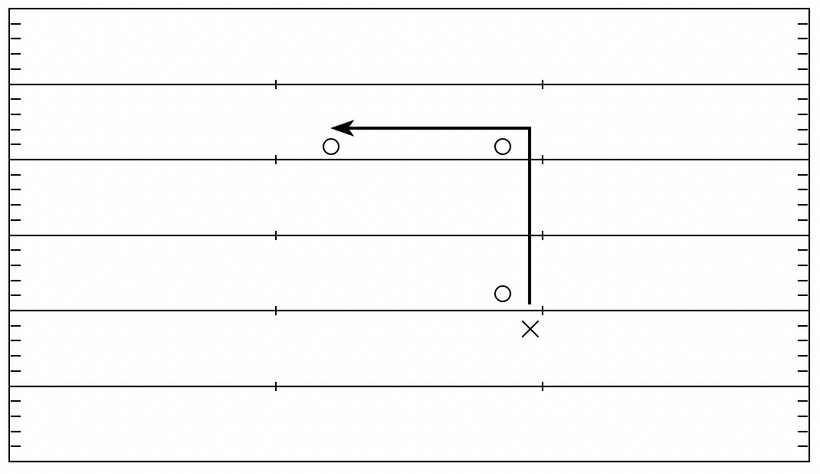
This is also a good time to start throwing to them at the end of their routes.
Another step you can add is to put a stand-up bag or garbage can out where the defender would normally be. (Figure 3)
This simulates finding the open window and slowing down enough to make a good target for the quarterback.
Always emphasize catching the ball with their eyes and seeing the tuck of the ball going into their arms.
Then they must turn upfield and get yards after the catch.
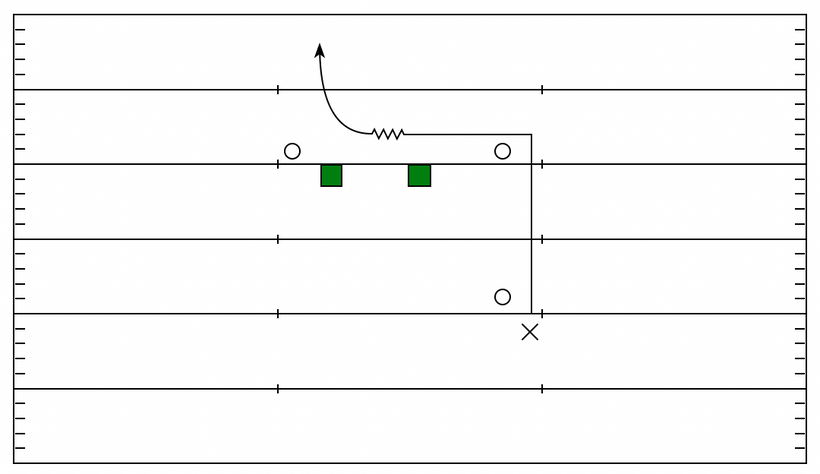
Conclusion
Dig routes are a great passing route strategy that can be used to attack the middle of the field.
They can be effective if the offense is able to clear out defenders with other routes and buy time for dig route receivers to find the open window.
When running dig routes, it’s important that receivers practice sharp cuts while looking at their quarterback and then slowing themselves down just enough so they are in a position to receive a pass.
Great dig routes are nearly impossible to defend when run correctly and are worth the effort and time needed to perfect them.


